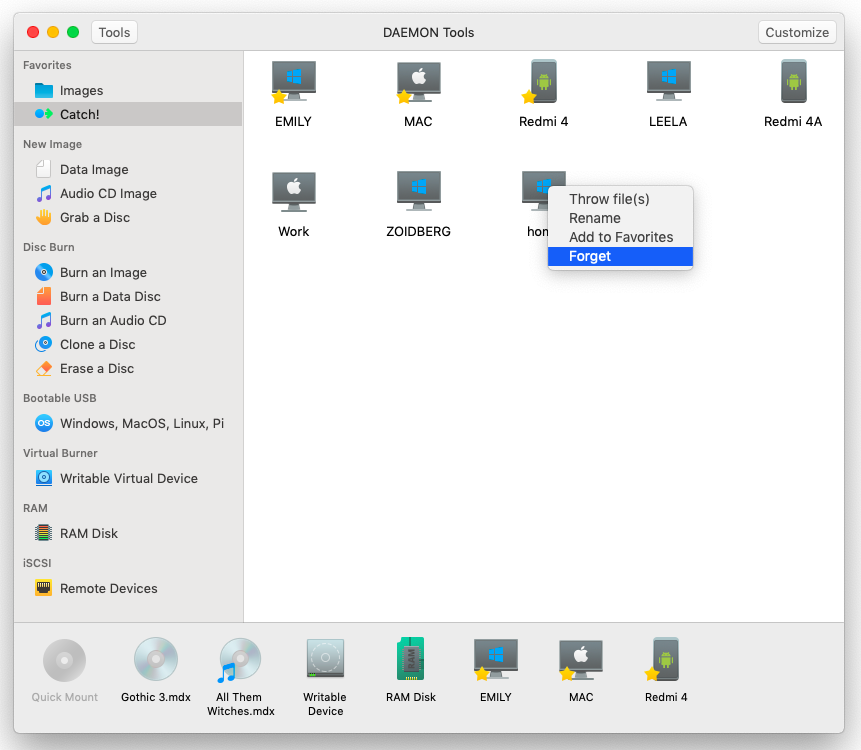Catch-All Mac OS
In Lion’s Finder, you can group files, folders, and applications in a variety of ways—by name or date last opened, for example, or, in the case of applications only, by application category. (View -> Arrange By -> Application Category.) Unfortunately, OS X lumps many apps into a catch-all Other category. Even when it does categorize an app more specifically, you might disagree with that categorization: For example, Amazon classifies the Kindle app as Reference, but I consider it Entertainment. Hints reader sd figured out how to change or add categories to applications yourself.

- The OS sold on USB sticks for a while, but that stopped: the only way you get MacOS now is by buying a mac, and then using the app store to get new versions of MacOS when they come out. Snoopen 10 months ago –.
- Catch-all is used in place of the account you designate as the catch-all. Domain.com is used in place of your domain name. There are tabs between the entries on each line. There is a caveat - if you create an alias, that email will go to the catch-all account as well as to the aliased accounts. As root, run postmap /etc/postfix/virtual.
Quit the app if it’s running and find its icon in your /Applications folder. Then, Control-click (right-click) on the app in question and choose Show Package Contents from the contextual menu that appears. Open the Contents folder, look for the info.plist file, and open it in your plain-text editor of choice. (You may be prompted as to whether or not you really want to unlock the file for editing; assure OS X that you would indeed like to do so.)
Catch-all Mac Os Update
Get a couple iMacs from between 2013 and now, a 2013 Mac Pro, and a couple MacBook Pros between 2013 and now, install latest macOS, test. Or recruit beta testers with the proper machines. There is definitely some type of memory leak in addition to whatever other bugs you're describing in diplomacy, etc. The catch-all '.' lazily loaded module could either define more '.' catch-all's with other lazy loaded modules or it could of course. MAC'S CATCH ALL OR BYRUM'S CATCH ALL. Jump to Latest Follow 1 - 19 of 19 Posts. Mac-b Premium Member. Joined Dec 7, 2006 23,900 Posts. Discussion Starter.
If your app is already categorized in something other than Other, search for the string LSApplicationCategoryType. If you can’t find it, or if this is a previously-uncategorized app, you’ll need to add the new key yourself. (If you do find it, skip the next paragraph.)
To add a new record to the info.plist file, skip down past the first four lines (the last of which should be an XML <dict> tag). On the line below that, insert the following lines:
Replace public.app-category.productcategory in that second line with one of the entries from Apple’s list of approved product categories. Copy the category name you’d like to specify for your app from that list, then paste it into the info.plist file, making sure you paste it exactly as it appears in that list.
Catch-all Mac Os X
When you’re finished, save your changes and go back to your Applications folder. If it isn’t already arranged by Application Category, use Arrange By to make it so. Don’t fret if your app doesn’t immediately appear in the category you specified: You often need to move the app out of the Applications folder and put it back in again to make the Finder notice the change.
Catch-all Mac Os Download
Moving apps can be tricky, however. Start by dragging the app to the Desktop. If OS X creates an alias there, instead of moving the actual app, hold down the Command key and drag it again. Once the application’s moved, just move it back into /Applications again. It should appear in the application group you specified.